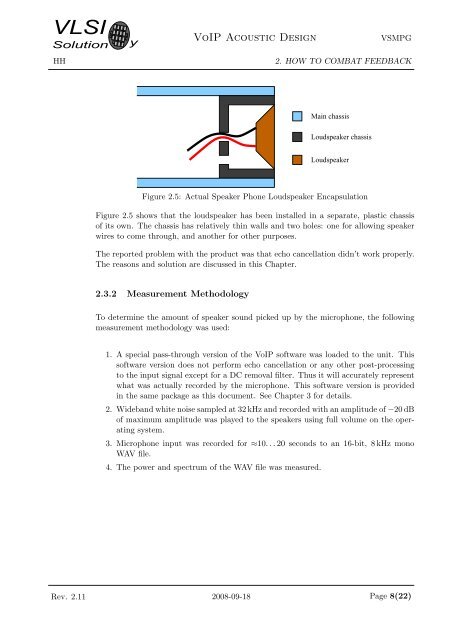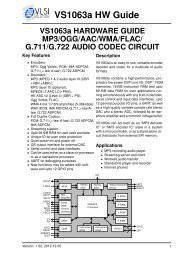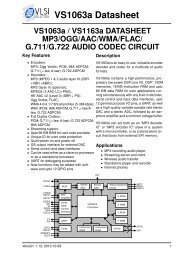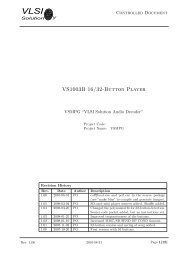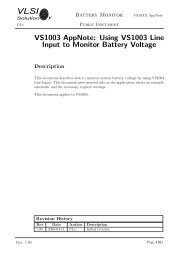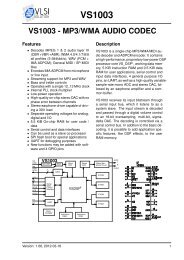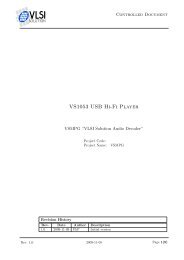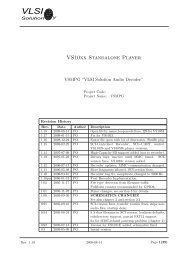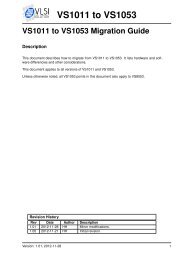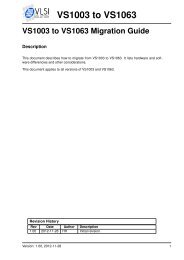VoIP Acoustic Design - VLSI Solution
VoIP Acoustic Design - VLSI Solution
VoIP Acoustic Design - VLSI Solution
Create successful ePaper yourself
Turn your PDF publications into a flip-book with our unique Google optimized e-Paper software.
<strong>VLSI</strong><strong>Solution</strong>HHy<strong>VoIP</strong> <strong>Acoustic</strong> <strong>Design</strong>VSMPG2. HOW TO COMBAT FEEDBACKMain chassisLoudspeaker chassisLoudspeakerFigure 2.5: Actual Speaker Phone Loudspeaker EncapsulationFigure 2.5 shows that the loudspeaker has been installed in a separate, plastic chassisof its own. The chassis has relatively thin walls and two holes: one for allowing speakerwires to come through, and another for other purposes.The reported problem with the product was that echo cancellation didn’t work properly.The reasons and solution are discussed in this Chapter.2.3.2 Measurement MethodologyTo determine the amount of speaker sound picked up by the microphone, the followingmeasurement methodology was used:1. A special pass-through version of the <strong>VoIP</strong> software was loaded to the unit. Thissoftware version does not perform echo cancellation or any other post-processingto the input signal except for a DC removal filter. Thus it will accurately representwhat was actually recorded by the microphone. This software version is providedin the same package as this document. See Chapter 3 for details.2. Wideband white noise sampled at 32 kHz and recorded with an amplitude of −20 dBof maximum amplitude was played to the speakers using full volume on the operatingsystem.3. Microphone input was recorded for ≈10. . . 20 seconds to an 16-bit, 8 kHz monoWAV file.4. The power and spectrum of the WAV file was measured.Rev. 2.11 2008-09-18 Page 8(22)


